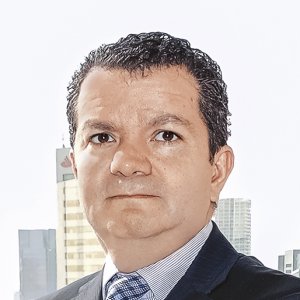Innovation-Driven Growth

STORY INLINE POST
Smart companies see an opportunity and go for it. But even in an era of low competition, the successful business will have an edge. In 2007, Powerstein, a renewable energy installer for the residential, commercial and industrial segments, saw the potential for the installation of solar panels and devised a strategy to climb the ranks. It decided to take advantage of “a niche that almost no other company focused on at the time,” says Pedro Garza, Director General of Powerstein in Mexico City.
Unlike today's thriving industry, 2007 presented a much different scenario. Competition was lower, the market was young and the early stages of technologies were a big challenge. Garza says Powerstein decided to focus on innovation. “To enter the market, we decided our competitive advantage would be based on innovation by introducing micro-inverters to the residential segment, where others were using central inverters employed in bigger systems.” He also highlights the importance of choosing the correct location to increase the chances of success. “The northern region of Mexico was our starting point because AC's high energy-consumption costs made it easier to implement our energy systems.”
Although it is common for households to blame CFE for increases in the cost of electricity, Garza says that CFE has been fighting hard to become a top-level company able to compete against incoming international players. Misconceptions left behind by Luz y Fuerza del Centro are also hard to overcome. “When CFE took over the entire power grid, old metering systems were replaced by digital systems. Luz y Fuerza del Centro did not properly calibrate those old meters, so every year they measured less energy being consumed. The new digital meters did not have this problem and as bills went up, reflecting real energy consumption, people got angry because they thought CFE was stealing from them.”
This situation convinced ever more customers to switch to distributed generation, but it did not necessarily mean more business activity. Garza explains how, as more customers started to approach Powerstein, it was also hard work to
make them understand the best option for their energy consumption. “This situation produced a boom in the number of quotations we had to make for angry clients who wanted to set up off-grid power systems and get CFE out of their lives. When we explained that an off-grid system could cost up to MX$80,000 compared with only MX$40,000 for a starting interconnected system, they then understood that it was better to pay off any debt they may have had with CFE and then come to us to interconnect a solar system,” he says.
Discontent and market resistance driven by bad experiences is not the sole domain of CFE. Garza says private companies have also contributed to the problem by using low-quality products to help drive profits without having a long-term view of their business. “This situation makes customers skeptical of the technology, making the adoption of renewables harder. Our goal as a company is to grow with honesty and to always offer the best option that will exceed our customers’ expectations,” he says. People should also recognize CFE’s effort to become a much better organization, which is slowly bearing fruit, Garza points out. Yet, he recognizes that much work is left to be done to ensure a competitive market. “One month is still a long time for a contract and it could create a level of uncertainty for potential clients.”
Beyond CFE, Powerstein’s market opportunities in the household sector are increasing, in part because of rising electricity prices, Garza says. “The fact that electricity prices keep going up makes people understand that they need a better and long-term solution, which is where we come in. Thanks to this social discontent, our sales are increasing every year.” While Garza does not put much weight on the impact of coming presidential elections on the residential sector, he does believe that they could influence price variations, possibly jeopardizing projects for big energy consumers. “The industrial sector invests much more money installing renewable energies. This sector is also extremely dependent on CFE’s fixed prices. To avoid uncertainty, we need market-driven pricing that depends on factors that investors can properly measure,” he says.























